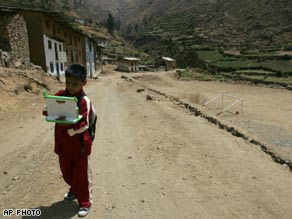 Amazon river dolphins being slaughtered for bait
Amazon river dolphins being slaughtered for baitAP –
By BRADLEY BROOKS, Associated Press Writer – Sat Jul 10, 4:01 pm ET
RIO DE JANEIRO – The bright pink color gives them a striking appearance in the muddy jungle waters. That Amazon river dolphins are also gentle and curious makes them easy targets for nets and harpoons as they swim fearlessly up to fishing boats.
Now, their carcasses are showing up in record numbers on riverbanks, their flesh torn away for fishing bait, causing researchers to warn of a growing threat to a species that has already disappeared in other parts of the world.
"The population of the river dolphins will collapse if these fishermen are not stopped from killing them," said Vera da Silva, the top aquatic mammals expert at the government's Institute of Amazonian Research. "We've been studying an area of 11,000 hectares (27,000 acres) for 17 years, and of late the population is dropping 7 percent each year."
That translates to about 1,500 dolphins killed annually in the part of the Mamiraua Reserve of the western Amazon where da Silva studies the mammals.
Da Silva said researchers first began finding dolphin carcasses along riverbanks around the year 2000. They were obviously killed by human hands: sliced open and quartered, with their flesh cut away.
The killings are becoming more common, researchers and environmental agents say. Even the government acknowledges that there is a problem. It's already illegal to kill the dolphins without government permission — as with all wild animals in the Amazon. But little is being done to stop it.
Less than five agents are tasked with protecting wildlife in a jungle region covering the western two-thirds of Amazonas state, which is more than twice the size of Texas, according to the Brazilian Institute of Environment and Renewable Natural Resources (Ibama), the enforcement arm of the Environment Ministry.
"It's a matter of priority, and right now the government is focusing on deforestation," said Ibama's Andrey Silva. "The killings of these dolphins exists — it's a fact."
The dolphins are attractive to anglers for their fatty flesh that is a highly effective bait for catching a type of catfish called piracatinga.
Consumption in neighboring Colombia is driving the slaughter. Some 884 tons of the fish came from Brazil in 2007, according to the Colombian Institute for Rural Development. That jumped to 1,430 tons in 2008 and spiked to 2,153 tons in 2009.
Simple economics exacerbates the problem: Killing dolphins is free, and their meat is valuable. Using the flesh from one carcass, fishermen can catch up to 1,100 pounds (500 kilograms) of piracatinga. According to da Silva and other researchers, they can sell the catfish for 50 cents per kilogram, translating into $550 for just a few nights' work — about double Brazil's monthly minimum wage.
"It's attracting a lot of poor people to this region to kill the dolphins and make easy money," said Antonio Miguel Migueis, a dolphin researcher with the Federal University of Western Para since 2005.
So far it's impossible to quantify the exact impact fisherman are having on the river dolphins — little research has been done to study the killings or even the overall population of the dolphins in the Amazon.
But activists warn that waiting for exhaustive studies could mean the dolphin population would be irreversibly devastated by the time the work is complete.
"This is most definitely a threat to the future of this river dolphin species," said Alison Wood, with the England-based Whale and Dolphin Conservation Society. "This is a relatively new threat, but clearly an extremely serious one."
Migueis said he warned Ibama and other authorities numerous times about the dolphin slaughter, but his reports fell on deaf ears.
Growing up to 8 feet (2.5 meters) long and weighing as much as 400 pounds (180 kilograms), Amazon river dolphins are the largest of four species known to exist in South America and Asia.
Their genetic siblings have already died off elsewhere: The Yangzte river dolphin in China was declared functionally extinct in 2006, the victim of pollution, overfishing and increased boat traffic.
Meanwhile, the International Union of Conservation of Nature lists the Ganges river dolphin in India as endangered, and the Irrawaddy river dolphin in Bangladesh as vulnerable.
Scientists believe river dolphins likely arrived in the Amazon during the Middle Miocene era 16 million years ago, when ocean levels were high around the world, and the sea inundated what is now lush rain forest.
For centuries they have been revered by locals and protected by myth. According to one tale, the dolphins transform into handsome men and leave the water at night, seducing and impregnating local women before returning to the river. Many simply consider it bad luck to kill them, given their supposed magical attributes.
But today, the quick payoff is trumping legend and superstition.
"Killing the dolphins is a fast and easy way for the fisherman to make money. It costs nothing but time," Vera da Silva said. "It's ugly because these dolphins have a folkloric value in the Amazon, and all that is disappearing for the sake of using them as bait."
___
Associated Press Writers Jessica Lleras in Bogota, Colombia, and Stan Lehman in Sao Paulo contributed to this report.




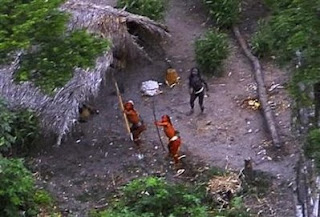
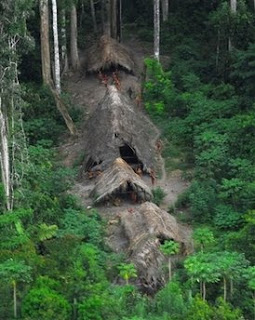
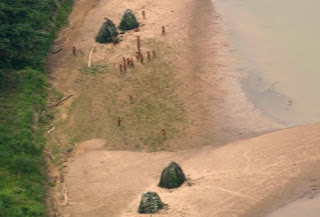
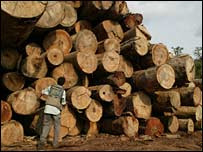
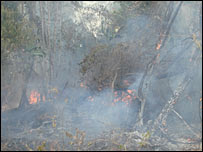
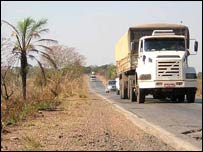 "The tools to decrease deforestation and monitor implementation of the law are still not good enough."
"The tools to decrease deforestation and monitor implementation of the law are still not good enough."

